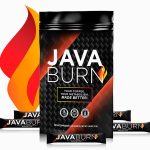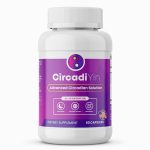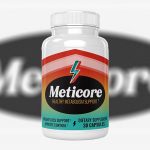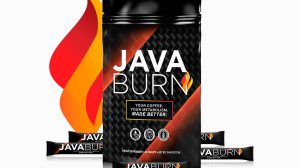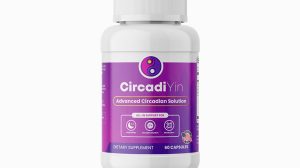Our Mission Statement
Our mission is simple – to bring information to our readers to help them make healthy decisions with the latest news and review guides. At Health Radar, we aim to simplify all of the information that is found online about the supplements that we discuss and break it down in a no-fuss format and share relevant news daily. From interviews to events to podcasts to medical journals, THR is committed to bringing the evidence of these supplements and latest discoveries to our readers in a user-friendly format, keeping a transparent tone that is necessary for proper research and making good choices for a healthy lifestyle.
Our team is a collection of passionate people who care about bringing information to everyone entertaining the world of natural health, demonstrating their immense knowledge of the wellness industry. Our fact-checked followed-up on research is written by enthusiasts of the truth, advocating for the readers to get all of the necessary information they need on any of the products reviewed or news submitted by the contributing community. We stand for accuracy, neutrality and balance in the industry and over time hope to be a true catalyst for change when it comes to living a higher quality of life.
Our Statement of Purpose
The Health Radar exists for the purpose of bringing health information and medical research news to the industry in a timely and accurate manner. The purpose of offering these editorial standards is to create a set of rules that ensure our high-quality and objective integrity in every report and review.
When issues are not as transparent as they should be, these standards offer guidance, rather than strict “dos” and “don’ts” that must be closely adhered to. The guidelines help to resolve any dilemmas, though the staff members remain responsible for starting these discussions with their editors.
Ethics Framework
When situations arise that could question or compromise the integrity and accuracy of reporting, the purpose of these editorial policies is to offer framework to address the circumstances. Editors and writers must collaboratively find a solution when a piece of content could be misconstrued. If a solution cannot be found, the editor or next highest manager will make the decision.
To reach a solution, the writer and editor and editor should go through the following questions:
- What do I already know, and what do I still need to know?
- What is the journalistic intent?
- What concerns do I have ethically?
- Are there policies and professional guidelines to account for?
- How can I integrate the opinions of others with other ideas and perspectives into this process?
- Who is affected by my decision, and what are their motivations?
- How would I feel, if put in the position of the stakeholders?
- What are the long-term and short-term consequences of my choices?
- What alternatives do I have that allow me to be hones while reducing the impact?
- Can I justify my decision and my pattern of thought?
Every situation should be resolved with these considerations in mind.
Sourcing and Unnamed Sources Policy
In each and every report and news story, the source of the content should be provided. Every writer is obligated to include the source of information provided in his or her articles.
Attributing Information
- Cite any website, book, article, database, or other supporting information whenever reporting data that is not common knowledge.
- Cite and link a story to its source material whenever possible.
- In some cases, breaking news may need to be credited to the third-party source from which the original story stems.
Citing Sources
- Writers should include a brief description of any media outlet, journal, or individual referenced that isn’t well known.
- The writer should include the professional, business, or personal affiliations of the source to the source material.
- Any conflict of interest should be indicated as early in the article as possible.
- A clear indication of the qualification that a source holds over the applicable subject should be expressed.
- Any social media referenced should be verified by the writer to ensure authenticity.
Using Anonymous Sources
- Every source used should be identified completely, though any doubt over the safety of exposing the source should be discussed between the writer and the editor.
- Writers should always be cautious of the motives of individuals that come forward with important information but wish not to be identified. These cautions should be expressed to the readers.
- If it is deemed appropriate to conceal important information about the source, the writer must use as complete of a description about the individual as possible.
External Reviews of Content
- Unpublished content should not be previewed by anyone except the editor.
- Direct quotes can be read aloud back to the sources.
- A source referenced in an article may review the sections that expressly concern their quotes and other accounts of a story.
- Submitting any content for external review should be a discussion exclusively between the writer and the editor.
Transparency
- Any time a writer is reporting on a story, he or she should identify themselves as a journalist.
- If there is a conflict of interest between the writer and the story he or she writes, then the information should be disclosed to both the editor and the reader, recusing themselves from the story.
Conflicts of Interest
- Both perceived and literal conflicts of interest should be addressed.
- Disclose whenever a family member is used as a source.
- A writer should not solicit or accept gifts, as it creates the appearance of bias.
- Writers cannot make donations that could potentially cause their objectivity and accuracy to be questioned.
- If in doubt, discuss the matter with an editor.
Verification and Fact-Checking Guidelines
Our writing team is dedicated to bringing accurate and honest information about the health and medical industries to our audience. This information is reviewed by editors to ensure that every fact published is accurate and consistent.
Corrections Policy and Practice
Trust, especially concerning news stories and review guide, is difficult to get back once it is lost, and we at Health Radar make every effort to ensure that our audience can trust us. To maintain our integrity, we address any and every wrongdoing speedily. Any statements that may need correction should be reported swiftly to one of our team’s editors, who will ensure that any changes take place. Writers should never promise that a correction will be implemented or that any content will be removed from the Health Radar website without prior approval by an editor.
Corrections
- If a story contains a factual error, a correction will be published with it.
- Writers much alert the appropriate teams to make changes when corrections are made online.
- The correction should be made within the section of the article it applies to, and an additional statement should be included at the bottom of the page to show how the original story had been altered.
- Details of a corrected factual statement should be clear, but concise, describing how the mistake has been corrected.
Takedown
- Requests to “unpublish” an article are not generally granted.
- If inaccuracy is suspected in a published article, both the editor and the writer should look in to this discrepancy, and publish a correction, if applicable.
- Even if additional action is required by the editing team, the article should never be removed as if it never was written in the first place.
Social Media
- If a social media account of Health Radar is used to disseminate an error in the facts or emphasis of a story, the writer should speak with their corresponding editor right away.
- An editor has the ability to take down the offensive post, replacing it with a corrected version and a statement of correction, as detailed in the above “Corrections” section.
In-House Editor Standards
Freelancing
- Any editor or writer employed by Health Radar should request permission to write freelance content on beat topics.
- All staff are prohibited from writing, working for, or consulting for direct competitors of Health Radar without prior approval from the platform.
Social Media
- The social medial accounts that are maintained and owned by Health Radar on Facebook, Twitter, and other platforms reflect the company, its integrity, and its reputation.
- The personal social media accounts held by the writers of the Health Radar team are solely their responsibility. The accounts, while not a direct medium of communication from Health Radar, may still represent the credibility and reputation of the team.
- Any posts made on the personal accounts of writers and editors should not include anything about the company that could cause readers to question their objective and professional interactions with Health Radar and the content we publish.
- Any social media presence should be mindful of keeping an objective approach and should not imply any conflict of interest with Health Radar’s content.
- Avoid sensationalism.
Embargoed Material
- The data and time of a press embargo should be honored by the writers.
- If the writer believes that the embargoed information has already been reported with other websites or platforms, the matter should be discussed with an editor.
Contacting the Editorial and News Teams
Feedback and inquiries regarding the information available on the website, including news stories and review guides, should be sent to editors via the contact information listed on the Contact Us section of the Health Radar website.

